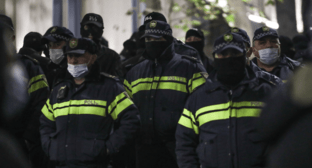02 August 2016, 14:55
Rights defenders condemn beating journalists in Armenia
The use of violence against journalists at dispersal of the opposition's action in Yerevan should be objectively investigated, and the perpetrators should be punished, the human rights organizations "Reporters Without Borders" (RWB) and the "Human Rights Watch" (HRW) have stated.
The "Caucasian Knot" has reported that on July 17, supporters of the "Constituent Parliament" captured the building of the police patrol-and-post service (PPS) regiment, and managed to keep it till July 31. On July 29, rebels' supporters held a march, which was dispersed by the police cordon, which had been set up near the captured building. As a result, on July 30, 55 marchers and four policemen were hospitalized. Some journalists were also injured during the dispersal of the march.
The Armenian police used excessive force against peaceful protesters on July 29; besides, there was an attack on journalists, who covered the protest event, says the statement posted on August 1 on the website of the international human rights organization HRW.
"Policemen used stun grenades, which injured dozens of protesters and journalists, some of them rather seriously. They also beat up journalists and protesters, and detained dozens of people," says the statement.
The HRW has called on the Armenian authorities to ensure "a thorough and efficient investigation, and bring the perpetrators of violence to justice, including those who gave orders."
The use of violence against journalists in Yerevan at the dispersal of the protest action was also condemned by the human rights organization "Reporters Without Borders" (RWB).
"Policemen in civilian clothes, armed with truncheons and iron bars, beat up journalists, although they had been informed that those reporters were just filming and covering the action," the "aysor.am" quotes the RWB's statement today.
"The journalists who covered the event were deliberately chosen as targets," said Johan Beer, the head of the RWB's office for Eastern Europe and Central Asia.
Full text of the article is available on the Russian page of 24/7 Internet agency ‘Caucasian Knot’.




